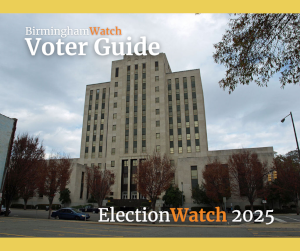Culture
The Architect of Birmingham’s Design Review Committee Dies at 80

Preservation advocate and attorney Samuel H. Frazier passed away on May 13, 2025, at his home in Decatur following a brief illness. He was 80 years old.
Frazier’s passion for historic preservation and urban renewal often fed both his law practice and his civic engagement. The primary emphasis of his corporate practice included municipal law, public finance, real estate and historic tax credits. From the 1970s through the 1990s, he served as an outside counsel for the city of Birmingham under four mayors. In the late 1970s, he was instrumental in crafting the city’s ordinance creating the Design Review Committee and served as chair for nearly 40 years.
He was not simply an advocate for urban planning and the preservation of historic buildings, he invested in renovating structures as well. One of the first historic property rehabilitation projects on Second Avenue North, The Zinzer Building, was spearheaded by Frazier. The Zinzer Building project helped spark the redevelopment of historic properties in downtown Birmingham that continues today.
“Without Sam’s passion and focus on historic preservation and urban renewal, Birmingham would look very different today,” reflected attorney and law partner Alton Parker of Spain & Gillon. “Sam worked statewide on projects from UAB and Conecuh County to sites throughout Alabama, his impact on economic development through preservation will be felt for years to come.”
Parker also recalled a pivotal moment in the development of UAB’s Kirklin Clinic. In the late 1980s, plans for the clinic, designed by world-renowned architect I.M. Pei, needed approval of the Design Review Committee. Pei attended the first presentation to the committee with plans for a windowless building with a granite façade.
Frazier, however, expressed concerns that a monolithic building would not be inviting to patients or the public. Since the site would feature prominently in the UAB Hospital campus, he and the committee pushed the architect to make changes by adding windows and creating more of a showplace of the building. Looking at the clinic today, you can see the impact the committee had on the building – and on the architect, as Pei never returned to present before them again.
The impact of Design Review on the city continues to be significant. From advocating for urban-focused site planning to better signage, Frazier’s impact continues through the review process both at the city and neighborhood levels. He was instrumental in creating Forest Park’s historic designation, as well as its neighborhood design review committee.
“Sam was a respected, vocal advocate of preserving the things that make our city special and distinct,” said local architect and Design Review Committee member Cheryl Morgan. “He also knew that leveraging historic assets brought economic investment in ways generic development just can’t. He also walked the talk of historic investment, reinvestment with his own properties.”
Anyone appearing before the committee or listening in the audience during meetings quickly became aware of Frazier’s long memory of Birmingham’s buildings, neighborhoods and the downtown core in general. His memory and experience were instrumental in helping the committee work effectively and have a positive impact, Morgan added.
His focus on developing with an urban and pedestrian focus in mind can be seen throughout the city. The Five Points South Chick-fil-A development is one example. The committee focused on the importance of the neighborhood’s pedestrian and mixed-use centers and the prominence of that corner as one of the visual gateways into Southside. Originally planning one of the company’s standard builds, the company worked with the committee to create a restaurant that fit in with the area – and that showed being a good neighbor is also good for business.
The Walgreens on Clairmont Avenue is another example of how the committee works with companies to help them fit in with neighborhoods. The building’s pedestrian edge complements the adjoining neighborhoods and, in conjunction with Walgreens’ national policy of not destroying historic buildings, the historic fire station was also preserved in the process.
Not every Design Review outcome was positive, though. Local attorney and current committee Chairman Richard Mauk recalled how it was one of the few regrets that they could not save the Birmingham News building after the owners used a loophole in the law to circumvent the committee’s wishes.
His service to preservation and urban renewal included being the Alabama adviser to the National Trust for Historic Preservation, former chairman of the Birmingham Historic Commission, former president of the Forest Park-South Avondale Neighborhood Association, a member of the board of directors of the Alabama Trust for Historic Preservation and a member of the Department of Architecture of the Episcopal Diocese of Alabama.
Frazier was a member of the Birmingham Bar Association; the Alabama State Bar, Taxation Section; the National Association of Bond Lawyers; and the American College of Mortgage Attorneys. He earned his Bachelor of Arts at Washington & Lee University, 1966; and his juris doctorate, in 1974, and master’s of laws in taxation, in 1979, at the University of Alabama. He served on the Board of Editors for the Alabama Law Review while attending law school. Frazier also served in the U.S. Army, obtaining the rank of captain in 1970.
Frazier is survived by his two children, Samuel H. Frazier Jr. and Sarah Frazier, and grandchildren James and Alexander Sennewald.
Services will be at Grace Episcopal Church in Woodlawn, 5712 First Ave. North, Birmingham, at 12:30 on Saturday, May 31, with interment at Elmwood Cemetery. Reception is at 5:30 at The Club.



